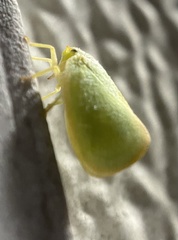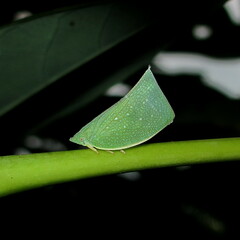©Mercedes-Fletcher, some rights reserved (CC-BY-NC)
©tjeales, some rights reserved (CC-BY-SA)
©sashadil, some rights reserved (CC-BY-NC)
©sashadil, some rights reserved (CC-BY-NC)
©sashadil, some rights reserved (CC-BY-NC)
©sashadil, some rights reserved (CC-BY-NC)
©tjeales, some rights reserved (CC-BY-SA)
©tjeales, some rights reserved (CC-BY-SA)
©tjeales, some rights reserved (CC-BY-SA)
©Our Lady of Mercy College - Parramatta, some rights reserved (CC-BY-NC)
©Our Lady of Mercy College - Parramatta, some rights reserved (CC-BY-NC)
©Our Lady of Mercy College - Parramatta, some rights reserved (CC-BY-NC)
©Our Lady of Mercy College - Parramatta, some rights reserved (CC-BY-NC)
©Our Lady of Mercy College - Parramatta, some rights reserved (CC-BY-NC)
©Grace Heemstra, some rights reserved (CC-BY-NC)
©Joás, some rights reserved (CC-BY-NC)
©Joás, some rights reserved (CC-BY-NC)
©tjeales, some rights reserved (CC-BY-SA)
©James K. Douch, some rights reserved (CC-BY-SA)
©3, some rights reserved (CC-BY-NC)
©3, some rights reserved (CC-BY-NC)
©3, some rights reserved (CC-BY-NC)
©3, some rights reserved (CC-BY-NC)
©3, some rights reserved (CC-BY-NC)
©3, some rights reserved (CC-BY-NC)
©3, some rights reserved (CC-BY-NC)
©Joost S., some rights reserved (CC-BY-NC)
©Guillaume Delaitre, some rights reserved (CC-BY)
©Thomas Hernandez, some rights reserved (CC-BY-NC)
©Thomas Hernandez, some rights reserved (CC-BY-NC)
©Lore, some rights reserved (CC-BY-NC)
©Lore, some rights reserved (CC-BY-NC)
©jarscott, some rights reserved (CC-BY-NC)
©Nat, some rights reserved (CC-BY-NC)
©Nat, some rights reserved (CC-BY-NC)
©James K. Douch, some rights reserved (CC-BY-SA)
©David Torres, some rights reserved (CC-BY-NC)
©David Torres, some rights reserved (CC-BY-NC)
©Laura Josefina Sanabria Collantes, some rights reserved (CC-BY-NC)
©Laura Josefina Sanabria Collantes, some rights reserved (CC-BY-NC)
©Laura Josefina Sanabria Collantes, some rights reserved (CC-BY-NC)
©Laura Josefina Sanabria Collantes, some rights reserved (CC-BY-NC)
©Laura Josefina Sanabria Collantes, some rights reserved (CC-BY-NC)
©Laura Josefina Sanabria Collantes, some rights reserved (CC-BY-NC)
©Laura Josefina Sanabria Collantes, some rights reserved (CC-BY-NC)
©David Torres, some rights reserved (CC-BY-NC)
©Nuni Siti Sobariyah, some rights reserved (CC-BY-NC)
©David Torres, some rights reserved (CC-BY-NC)
©Anthony, some rights reserved (CC-BY-NC)
©Anthony, some rights reserved (CC-BY-NC)
©Anthony, some rights reserved (CC-BY-NC)
©RattyExplores, some rights reserved (CC-BY-NC)
©RattyExplores, some rights reserved (CC-BY-NC)
©Előd Kondorosy, some rights reserved (CC-BY-NC)
©Sarka Masova, some rights reserved (CC-BY)
©Sarka Masova, some rights reserved (CC-BY)
©Sarka Masova, some rights reserved (CC-BY)
©kanzabilbina, some rights reserved (CC-BY-NC)
©lrnaturalist, some rights reserved (CC-BY-NC)
©Soh Kam Yung, some rights reserved (CC-BY-NC)
©Bert Harris, some rights reserved (CC-BY-NC)
©Albert Kang, some rights reserved (CC-BY-NC)
©Girdhar Netam, some rights reserved (CC-BY-NC-ND)
©Girdhar Netam, some rights reserved (CC-BY-NC-ND)
©Girdhar Netam, some rights reserved (CC-BY-NC-ND)
©Girdhar Netam, some rights reserved (CC-BY-NC-ND)
©Diego Galárraga Sugoniaev, some rights reserved (CC-BY-NC)
©Cecile Roux, some rights reserved (CC-BY-NC)
©CheongWeei Gan, some rights reserved (CC-BY)
©cinclosoma, some rights reserved (CC-BY-NC)
©cinclosoma, some rights reserved (CC-BY-NC)
©cinclosoma, some rights reserved (CC-BY-NC)
©cinclosoma, some rights reserved (CC-BY-NC)
©Elias Bader, some rights reserved (CC-BY-NC)
©Gavin Falck, some rights reserved (CC-BY-NC)
©Gavin Falck, some rights reserved (CC-BY-NC)
©Gavin Falck, some rights reserved (CC-BY-NC)
©Albert Kang, some rights reserved (CC-BY-NC)
©Malcolm Tattersall, some rights reserved (CC-BY-NC)
©Malcolm Tattersall, some rights reserved (CC-BY-NC)
©Luis G Restrepo, some rights reserved (CC-BY-NC)
©Guillaume Delaitre, some rights reserved (CC-BY)
©Rich Hoyer, some rights reserved (CC-BY-NC-SA)
©Rich Hoyer, some rights reserved (CC-BY-NC-SA)
©Jason J. Dombroskie, some rights reserved (CC-BY-NC)
©Jason J. Dombroskie, some rights reserved (CC-BY-NC)
©Franz Anthony, some rights reserved (CC-BY-NC)
©Franz Anthony, some rights reserved (CC-BY-NC)
©Gordon C. Snelling, some rights reserved (CC-BY)
©Seema Merchant, some rights reserved (CC-BY-NC)
©Prajwal J Ullal, some rights reserved (CC-BY-NC)
©Guillaume Delaitre, some rights reserved (CC-BY)
©James K. Douch, some rights reserved (CC-BY-SA)
©Kozue Kawakami, some rights reserved (CC-BY)
©Kozue Kawakami, some rights reserved (CC-BY)
©Kozue Kawakami, some rights reserved (CC-BY)
©Kozue Kawakami, some rights reserved (CC-BY)
©brem92, some rights reserved (CC-BY-NC)
©brem92, some rights reserved (CC-BY-NC)
©dianadavey, some rights reserved (CC-BY-NC-ND)
©Ayaan S, some rights reserved (CC-BY-NC-ND)
©Megan Hanson, some rights reserved (CC-BY-NC-ND)
©Reiner Richter, some rights reserved (CC-BY-NC-SA)
©Reiner Richter, some rights reserved (CC-BY-NC-SA)
©Albert Kang, some rights reserved (CC-BY-NC)
©Tim, some rights reserved (CC-BY)
©Tim, some rights reserved (CC-BY)
©Federico Figueroa Cabezas, some rights reserved (CC-BY)
©Alejandro Lopez, some rights reserved (CC-BY-NC-SA)
©Alejandro Lopez, some rights reserved (CC-BY-NC-SA)
©Alejandro Lopez, some rights reserved (CC-BY-NC-SA)
©Bart Wursten, some rights reserved (CC-BY-NC)
©Bart Wursten, some rights reserved (CC-BY-NC)
©Bart Wursten, some rights reserved (CC-BY-NC)
©Bart Wursten, some rights reserved (CC-BY-NC)
©klearad, some rights reserved (CC-BY-NC)
©klearad, some rights reserved (CC-BY-NC)
©klearad, some rights reserved (CC-BY-NC)
©klearad, some rights reserved (CC-BY-NC)
©Vikrant Kumar, some rights reserved (CC-BY-NC)
©Purab Chowdhury, some rights reserved (CC-BY-NC)
©James K. Douch, some rights reserved (CC-BY-SA)
©Purab Chowdhury, some rights reserved (CC-BY-NC)
©Martin Rady, some rights reserved (CC-BY)
©budak, some rights reserved (CC-BY-NC)
©warusha_heshani_herath, some rights reserved (CC-BY-NC)
©warusha_heshani_herath, some rights reserved (CC-BY-NC)
©Martin Rady, some rights reserved (CC-BY)
©Lyn Cook, some rights reserved (CC-BY-NC-SA)
©Miranda Durham, some rights reserved (CC-BY-NC-ND)
©Miranda Durham, some rights reserved (CC-BY-NC-ND)
©Miranda Durham, some rights reserved (CC-BY-NC-ND)
©Miranda Durham, some rights reserved (CC-BY-NC-ND)
©Lyn Cook, some rights reserved (CC-BY-NC-SA)
©Ran Dai, some rights reserved (CC-BY-NC)
©Lyn Cook, some rights reserved (CC-BY-NC-SA)
©Lyn Cook, some rights reserved (CC-BY-NC-SA)
©Vikrant Kumar, some rights reserved (CC-BY-NC)
©dianadavey, some rights reserved (CC-BY-NC-ND)
©Kozue Kawakami, some rights reserved (CC-BY)
©Kozue Kawakami, some rights reserved (CC-BY)
©Kozue Kawakami, some rights reserved (CC-BY)
©budak, some rights reserved (CC-BY-NC)
©paulsullivan25, some rights reserved (CC-BY-NC)
©José Valério, some rights reserved (CC-BY-NC)
©José Valério, some rights reserved (CC-BY-NC)
©José Valério, some rights reserved (CC-BY-NC)
©klearad, some rights reserved (CC-BY-NC)
©klearad, some rights reserved (CC-BY-NC)
©klearad, some rights reserved (CC-BY-NC)
©klearad, some rights reserved (CC-BY-NC)
©klearad, some rights reserved (CC-BY-NC)
©Bundilla Preschool, some rights reserved (CC-BY-NC)
©Bundilla Preschool, some rights reserved (CC-BY-NC)
©Bundilla Preschool, some rights reserved (CC-BY-NC)
©Bundilla Preschool, some rights reserved (CC-BY-NC)
©Bundilla Preschool, some rights reserved (CC-BY-NC)
©Bundilla Preschool, some rights reserved (CC-BY-NC)
©Bundilla Preschool, some rights reserved (CC-BY-NC)
©Doreen, some rights reserved (CC-BY)































































































































































